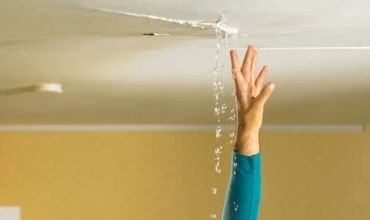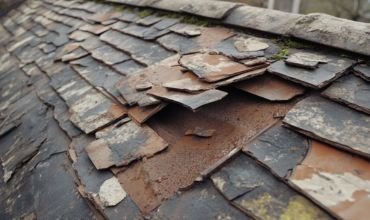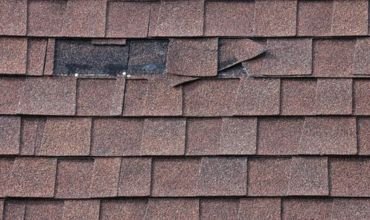Homeowners must not ignore a leaking roof, as even minor leaks can escalate into costly structural damage if left untreated. Wouldn’t you agree? Have you also noticed minor leaks in the last few months? If so, then it’s high time either you fix this leakage issue or suffer the consequences of water damage, mold growth, and expensive repairs. Acting now can save you from further deterioration and keep your home safe. Therefore, here at ManageMyRoof, we provide necessary help to homeowners by offering expert roofing solutions on how to repair roof leaks, including leak detection, repairs, and preventive maintenance.

Since roof leaks are very common, understanding their root causes can help prevent costly repairs and long-term damage. Roof leaks often result from a variety of factors, including:
Cracks have been one of the most common roofing issues, often leading to leaks and structural damage if left untreated. These cracks usually develop due to prolonged exposure to extreme weather conditions, including excessive heat, heavy rains, and freezing temperatures. This can cause roofing materials to expand and contract over time, leading to potential issues.
A poorly installed roof results in serious structural problems, including leaks and other roofing damage. When roofing materials are not properly secured, gaps can form, allowing water to seep in and cause damage over time. This can lead to moisture buildup, which weakens the roof’s structure and expedites deterioration.
No matter how strong and durable a roof may be, time and exposure to the elements gradually weaken its structure. With time, roofing materials go through harsh weather conditions such as intense sunlight, heavy rain, strong winds, and temperature changes. These environmental factors slowly break down protective coatings, weaken shingles, and degrade sealants, making the roof more vulnerable to leaks.

Flashing is a thin metal sheet that helps keep water out of the roof. You can find it around chimneys, vents, and skylights. If flashing gets damaged or isn’t placed correctly, water can sneak in and cause problems. Over time, sun, rain, and wind can make it crack or wear out. If it’s not installed the right way, it might come loose or even fall off, letting water seep into the roof. Checking it regularly and fixing any issues early can help avoid bigger repairs later.
Skipping regular roof maintenance is a big reason why leaks happen. Simple tasks like cleaning gutters, clearing debris, and checking for damage help keep the roof strong and in good shape. If these tasks are ignored, leaves and dirt can build up, causing water to collect in certain spots. Over time, this trapped water can weaken the roof and lead to leaks.
When gutters get clogged with leaves, dirt, and other debris, they stop working the way they should. Instead of directing rainwater away, the blocked gutters cause water to pool on the roof or spill over the sides of the house. This can lead to serious issues like roof leaks, damaged walls, and even problems with the foundation.
When shingles are damaged or missing, your roof becomes vulnerable to leaks and wear. Over time, strong winds, heavy rain, and intense sunlight can weaken shingles, causing them to crack, bend, or break off completely. When that protective layer is gone, water can seep through and make its way inside, leading to leaks and damage in your home.
If you are wondering how to repair a leaking roof, then fixing the issue doesn’t have to be complicated. With the proper tools and techniques, you can tackle common problems efficiently. Here are some easy-peasy ways to stop water leaks and safeguard your home.

Check for water stains on ceilings or walls inside the house. Inspect the roof for missing shingles, cracked flashing, or clogged gutters. After that, look closely at the suspected leak area from both inside and outside.
Once you’ve found the leak, remove leaves, dirt, and other buildup from the affected area. This will help you see the damage clearly and allow repairs to be more effective.
Small cracks in the roof can let water in and cause leaks. To stop this, use a sealant or filler to close up the gaps, especially before heavy rain. Checking your roof on a regular basis helps catch these problems early so you can fix them before they get worse.
If shingles are broken, curled, or missing, replace them to restore the protective layer of your roof. Secure the new shingles properly to prevent further leaks.
Damaged or loose flashing can let water in through joints and seams. Reattach or seal these areas with roofing cement to stop leaks in tricky spots.
Clogged gutters cause water to pool on the roof instead of flowing away. Regularly clean gutters to keep rainwater moving properly and prevent overflow issues.

Good waterproofing, like special protective coatings, adds an extra shield to your roof. These coatings help stop water from leaking through and make the roof last longer. Using them can keep your home safer from rain and moisture damage.
Checkiof regidentifyly helps spot small problems before they become expensive to fix. Getting expert advice can also help you find the best ways to prevent leaks and keep your roof in good shape.
Remember, a leaking roof is never an issue that can be ignored. Even a small leak can quickly turn into a bigger problem if left untreated. If you need more clarity on why fixing a roof leak should be a priority, here are some key reasons:
Lastly, this guide on how to repair roof leak serves as a helpful resource for identifying, addressing, and preventing roof leaks effectively. By following the outlined steps, such as inspecting for damage, sealing cracks, replacing missing shingles, and maintaining proper drainage, you can protect your home from costly repairs and structural issues. If you have any further queries regarding leakage prevention, feel free to get in touch with professional roofers at ManageMyRoof.
To fix a roof leak from the inside, place a bucket to catch dripping water and apply roofing tape or sealant to the affected area temporarily.
The cost of repairing a roof leak depends on the severity of the damage and the type of roof. Minor repairs typically range from $150 to $1,000.
To fix a shingle roof leak, replace damaged or missing shingles and apply roofing sealant to any cracks or gaps. Ensure the area is properly sealed to prevent future leaks.
To fix an RV roof leak, clean the affected area and apply a waterproof sealant or patch. For larger leaks, consider replacing damaged sections or using a rubber roof coating for long-term protection.
To fix a tin roof leak, clean the damaged area and apply a waterproof sealant or patch. For larger issues, replace rusted or loose metal sheets and secure them with roofing sealant.
To fix a leaking camper roof, clean the damaged area and apply a sealant or patch to cover the leaks. For long-term protection, consider using a rubber roof coating.
To repair a leaking metal roof, start by cleaning the damaged area and sealing it with a waterproof patch or sealant. If the leak is severe, replace any compromised panels for their long-term protection.
Fixing a roof vent leak involves resealing the vent flashing with roofing caulk or replacing damaged flashing. Ensuring the vent is securely fastened helps prevent future leaks.
Leave a Reply